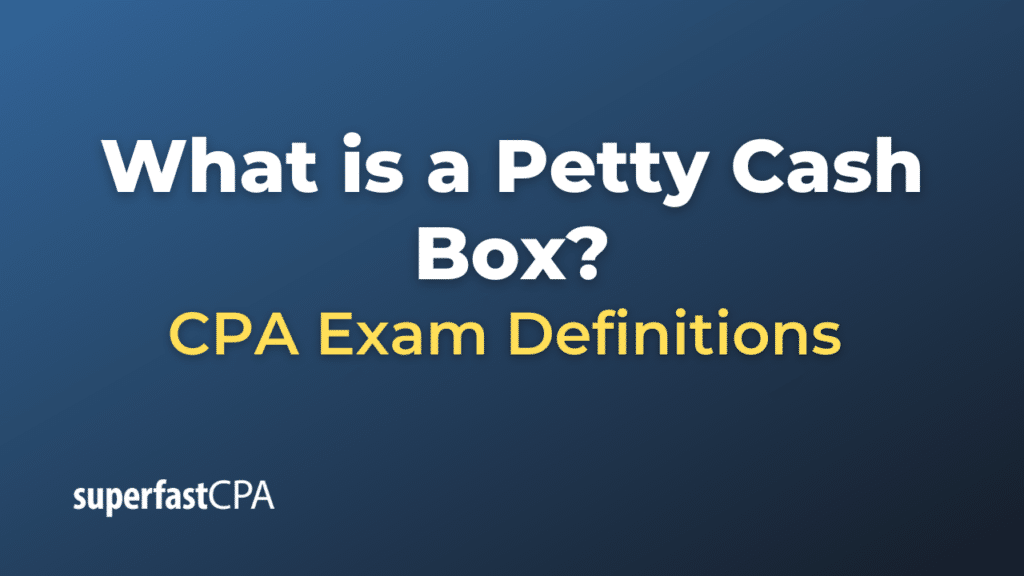Petty Cash Box
A petty cash box is a secure container where petty cash, or small amounts of cash kept on hand for minor expenses, is stored. It’s typically a small, lockable box that is entrusted to a specific person, usually referred to as the petty cash custodian.
Inside the petty cash box, in addition to the cash, there are often vouchers or petty cash slips that the custodian fills out whenever cash is disbursed. Each voucher includes details such as the date, the amount of money disbursed, the purpose of the disbursement, and the name of the person receiving the money. These vouchers, along with the corresponding receipts, are used to track petty cash expenditures.
The petty cash box should be stored in a secure location to reduce the risk of theft. Periodically, the petty cash custodian will count the remaining cash and vouchers to reconcile the total with the original amount of petty cash. If there are any discrepancies, they can be investigated and resolved. This process helps ensure that the petty cash is being used appropriately and that all transactions are properly recorded.
Example of a Petty Cash Box
Let’s consider an example of how a petty cash box is used in a small business:
- The business decides to establish a petty cash fund of $200 for small, unexpected expenses. A small, lockable cash box is purchased, and $200 in cash is placed inside. This becomes the petty cash box.
- The owner entrusts the petty cash box to the office manager, making her the petty cash custodian.
- Throughout the week, various small expenses come up. For each one, the office manager opens the petty cash box, disburses the required amount of cash, and fills out a petty cash slip. The slip includes the date, the amount of cash disbursed, the purpose of the expenditure, and the name of the person who received the cash.For example, on Monday, she gives $20 to an employee to buy more coffee for the office. She fills out a petty cash slip, noting the details of the transaction.
- When the employee returns with the coffee and the receipt, the office manager places the receipt in the petty cash box and files the petty cash slip.
- This process repeats throughout the week for various small expenses.
- On Friday, the office manager counts the remaining cash and adds up the amounts on the petty cash slips. The total should equal the original $200. If it doesn’t, she can review the slips and receipts to find any errors or discrepancies.
This is a simple example, but it demonstrates the purpose of a petty cash box and how it might be used in a small business. The petty cash box serves both as a source of cash for minor expenses and a tool for tracking and controlling those expenses.













